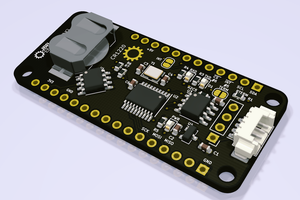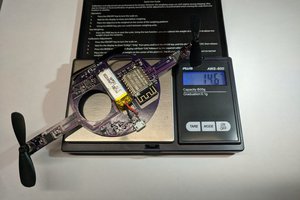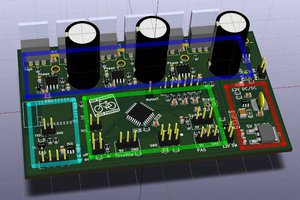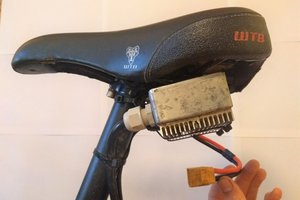All of the GPIOs {GPIO 1, 3 (UART), GPIO 0, 2 (I2C), GPIO 4, 5, 12, 13, 14, 15, 16} are broken out (GPIO 6 - 11 are for the QSPI flash) so this board can also be used to drive ESCs for use with brushless motors, and the flight controller also makes a great general purpose robotic control board.
Solder a 1.25-inch-long, 28-gauge insulated copper wire to the solder pad for a simple but effective RF antenna. Transmission range is easily 40 feet in the open, plenty for a robot or small UAV. This means real-time telemetry can be broadcast to a tablet or smartphone, and that control of the robot or UAV via the embedded wifi is straightforward and practical.
The use of the Ultimate Sensor Fusion Solution allows stable, headless flight even with the smallest of UAVs because of the superior heading accuracy and effective magnetic anomaly detection and correction afforded by the EM7180 and its embedded algorithms. The orientation estimation remains accurate even in the presence of strong fixed magnetic fields from the nearby brushed DC motors but also from the stray fields generated by the several amps of current flowing at the highest motor drive.
The production flight controller boards use 0.5-mm thick PCBs to reduce the weight of the board from 2.1 g (for the 1.6-mm-thick hand-made PCBs) to 1.1 g; 1.0 g matters when flying ultra-small UAVs that weigh less than 50 g!
With the U816 frame and motors total weight of the UAV is 26 g without battery. For a typical 350 mAH battery which provides up to 8 minutes of flight time, the total flying weight is less than 35 g! And this small craft using this flight controller flies as stably and smoothly as much more expensive drones weighing 20 times as much!
Check out the videos below demonstrating headless flight in a 35 g UAV!
The SuperFly Hackable ESP8266 Flight Controller is open-source and the design files and gerbers are available in the OSH Park shared space.
Assembed and tested boards are available for sale at a very reasonable price at Tindie.
 Kris Winer
Kris Winer
 John Whittington
John Whittington
 Sophi Kravitz
Sophi Kravitz

 Rory
Rory